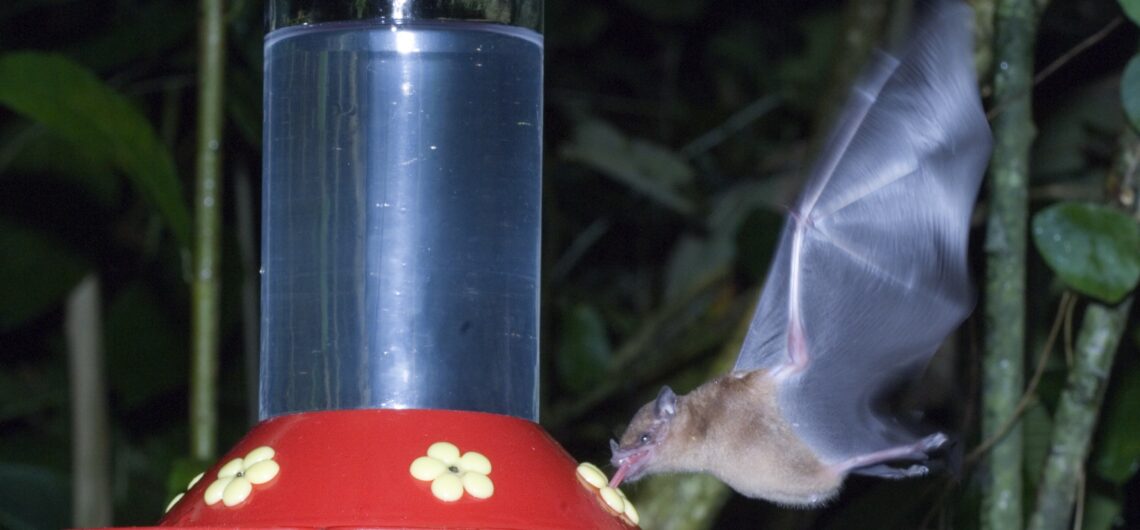Orange Nectar Bat
Lonchophylla robusta
The Orange Nectar Bat is a common species of mid-elevation rainforests and a regular nighttime visitor to the Canopy Lodge hummingbird feeders! This species is a member of the extremely diverse leaf-nosed bat family (Phyllostomidae); it prominently features the “noseleaf” typical of its family and can be recognized by its orange-rufous to buffy coloration. It ranges from Nicaragua south into Venezuela and Peru.
The Orange Nectar Bat actually feeds predominantly on insects, as well as nectar from flowers (and feeders), pollen, and fruit. Its method of nectar-feeding has attracted particular scientific attention. A recent study discovered that this species does not actively lap up the nectar but rather employs tiny muscles to pump the nectar up two grooves along its tongue; this adaptation, which differs significantly from the feeding methods of other nectarivorous bat species, had not previously been observed in mammals. Orange Nectar Bats spend the daytime roosting in small groups in caves and under boulders.
As mentioned, Orange Nectar Bats are regular nocturnal visitors to the hummingbird feeders at the Canopy Lodge and so can often be seen as well on the Panama Fruit Feeder Cam. Given their interest in these feeders and their rapid hovering flight patterns, they are often initially mistaken for some sort of nocturnal hummingbird by Cam viewers! Take a look below at the bats in action.
References
Brown, E. (2015). “Bat drinks using ‘tongue-pump’ trick.” Nature. https://www.nature.com/news/bat-drinks-using-tongue-pump-trick-1.18434.
Dávalos, L., H. Mantilla, C. Medina, J. Pineda, and B. Rodriguez. (2015). Lonchophylla robusta. In The IUCN Red List of Threatened Species. https://dx.doi.org/10.2305/IUCN.UK.2015-4.RLTS.T12268A22038399.en.
Reid, F. (2009). A Field Guide to the Mammals of Central America & Southeast Mexico. Oxford University Press, New York, NY, USA.

